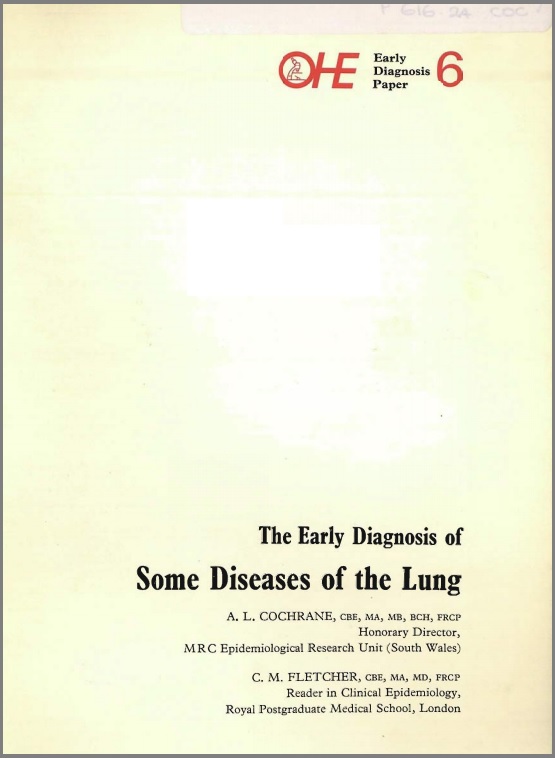Sign up to our newsletter Subscribe
Analysing Global Immunisation Expenditure

Chronic bronchitis and emphysema account for 7 per cent of all deaths in men and 3 per cent in women between the ages of 45-64. Simple bronchitis can be diagnosed by asking about persistent expectoration, or more specifically by measuring the volume of…
Chronic bronchitis and emphysema account for 7 per cent of all deaths in men and 3 per cent in women between the ages of 45-64. Simple bronchitis can be diagnosed by asking about persistent expectoration, or more specifically by measuring the volume of sputum a specimen of which, if purulent, will also permit the diagnosis of mucopurulent bronchitis. Obstructive bronchitis can be diagnosed by spirometry or by measuring peak flow and forced expiry time. These cheap, accurate and simple tests can be carried out by the General Practitioner. After diagnosis the only method likely to arrest development of disability is to persuade subjects with early evidence of airways obstruction to stop smoking.
Bronchial carcinoma, which accounts for a steadily rising number of deaths, can be diagnosed by two methods — chest X-ray and sputum cytology. The former is more acceptable, quicker and cheaper. Treatment cannot be successful unless diagnosis precedes metastasis of the tumour. The fact that approximately 80 per cent of patients whose tumours are removed by surgery die with metastasis shows that this usually precedes development of radiologically diagnosable disease. The small proportion without metastases should be greater the earlier diagnosis is made but in a large scale controlled study six monthly X-rays did not reduce mortality. Periodic examinations might, however, be used to persuade cigarette smokers to stop and this would reduce mortality.
There has been a marked reduction in the prevalence of active pulmonary tuberculosis during the twentieth century. Chest radiography and sputum examination are again methods of diagnosis. Drugs now almost guarantee successful treatment at all stages of the disease providing organisms are sensitive and the patients co-operative. However, early diagnosis still reduces the probability of ‘resistance’ developing, residual lung damage, and the implementation of types of treatment causing social upheaval. Routine chest radiography should now be confined to those referred by General Practitioners who should pay particular attention to those who if infectious are particularly dangerous, and to immigrants.
Cochrane, A.L. and Fletcher, C.M.
(1968) Early Diagnosis of Some Diseases of the Lung. OHE Early Diagnosis Series. Available from https://www.ohe.org/publications/early-diagnosis-some-diseases-lung/